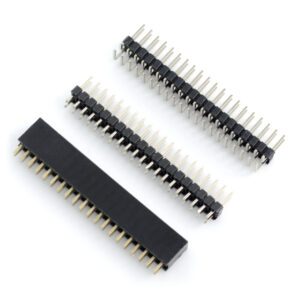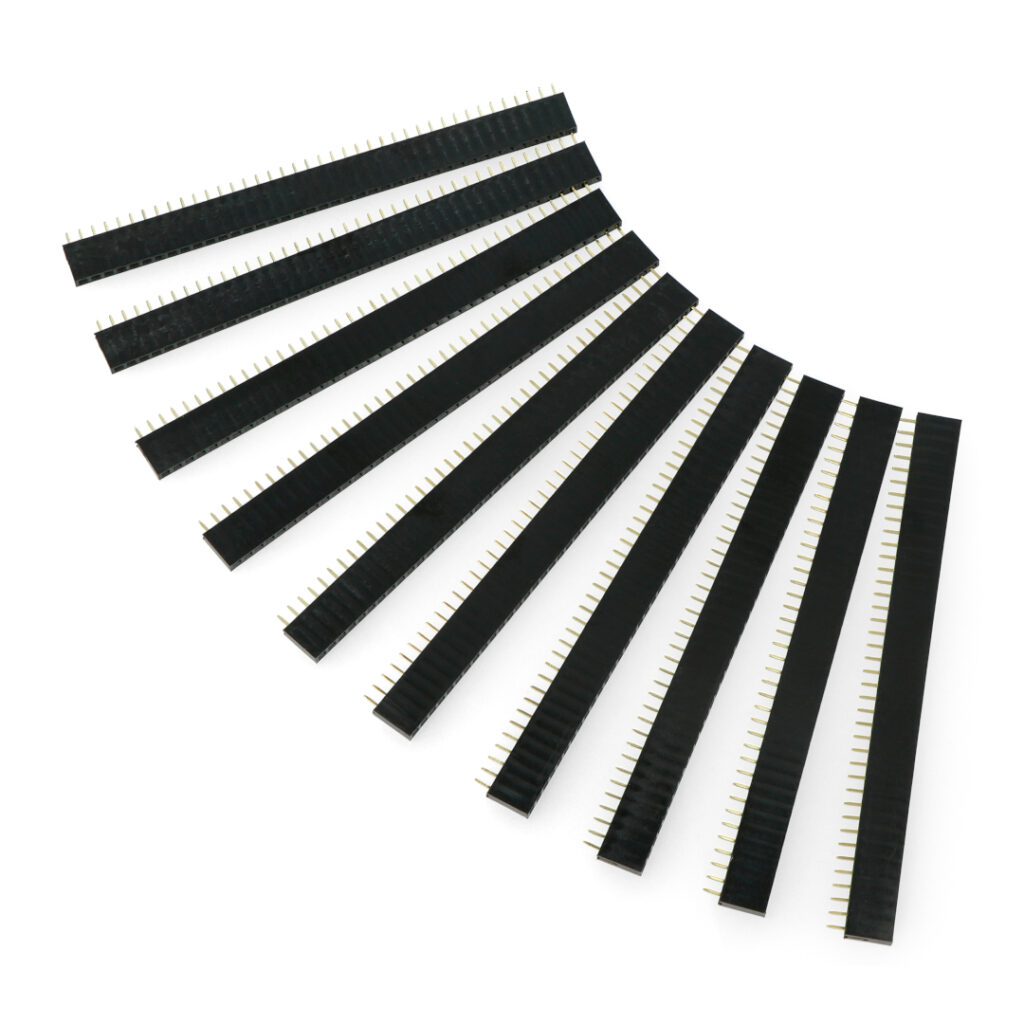Table of Contents:
Wondering what goldpin connectors are and where they are used in electronics? In this article you will find all the necessary information that will dispel your doubts and help you better understand why goldpins are an important part of modern electronic devices. We invite you to read more!
Goldpin - basics
Pin connectors, popularly known as goldpin, are a key component in the world of electronics. These small, but essential components, help fuse circuits on PCBs to external devices, forming an integral part of the design of many devices.
Goldpin, as the name suggests, is made of gold, which translates into excellent electrical conductivity and corrosion resistance, which is extremely important in terms of performance and durability of electronic connections.
Effectiveness pin connectors largely depends on their correct installation. In this context, it is extremely important to use the right tools – goldpin crimpers, which guarantee stable and durable connections. Understanding goldpins and their role in electronics is key to achieving optimal performance for your device.
Due to their specifications, goldpins vary in configurations, including single- and double-row, as well as type – male and female, further emphasizing their versatility and versatility in electronic applications.
Goldpin types and configurations
Goldpins are an extremely important component in modern electronics, and their variety of configurations makes them suitable for use in almost any device. A separate issue is the difference between male and female goldpins, or so-called socket types.
As for goldpin connector configurations, the most common are single- and double-row versions. Single-row connectors consist of a single row of contacts, placed in a single row. They are ideal for simple connections where a large number of ports are not required. Double-row connectors, on the other hand, offer a greater number of ports thanks to two parallel rows of contacts, which has resulted in their popularity in more complex systems.
So it’s important to understand what particular connector configurations and types of goldpin sockets are best suited for, so that you can get the most out of them and ensure your device is performing optimally.
Connector lead spacing
Lead spacing, also known as raster, is the distance between the centers of adjacent goldpins in a single connector. It explains how close the contacts are to each other in the connector, which has a direct impact on how it can be integrated with other circuit components. Choosing the right spacing is key to ensuring that goldpin connectors fit perfectly into your design.
The standard values for goldpins are 2.54 mm (0.1 inch) and 1.27 mm (0.05 inch), although there are other, less common spacings. The 2.54mm raster is the most widely used in many electronic applications because of its versatility and ease of use. In contrast, a goldpin with 1.27 mm spacing offers higher connection density, which can be useful in more complex electronic circuits.
Remember that choosing the right lead spacing depends on the specifics of your project and the type of devices you want to connect goldpin connectors to.
Goldpin assembly - THT vs. SMD
When it comes to ways to mount connectors like goldpin, it is impossible not to mention the two dominant methods – THT (Through-Hole Technology) mounting and SMD (Surface-Mounted Device) mounting.
Both of these mounting methods have their specific applications and advantages, which determine the choice of one or the other depending on the specific project.
THT mounting is a traditional and proven method of construction. It involves threading goldpins through holes in the circuit board and soldering them from underneath. The technology is insanely reliable, offering robust and long-lasting connections that are resistant to shock and vibration.
Its main advantage is the ease of installation, which does not require specialized equipment. This makes THT assembly a common choice for hobbyists, amateurs and small DIY projects.
On the other hand, SMD assembly is a modern technology that involves mounting goldpins directly on the surface of a PCB. As a result, the method offers a much higher density of components on the board, which is essential in the world of miniaturization of electronic devices. SMD assembly tends to be faster and more efficient, but requires more sophisticated equipment and precise control, which is key to ensuring the quality of connections. The final choice of mounting method depends primarily on the requirements of your electronic project.
Key advantages of goldpin connectors
Goldpins, thanks to their unique properties, offer a number of advantages that make them an essential component in any electronic project. As mentioned earlier, they are made of gold, which translates into excellent electrical conductivity. This means that they are able to efficiently transfer electronic signals from one part of the circuit to another, which is absolutely crucial for any electronic device. By this fact goldpins enable fast and efficient communication between components, making the process of transferring information more efficient.
Another major advantage of goldpin connectors is their resistance to corrosion. Thanks to the use of gold, which is known for its extreme durability and weather resistance, goldpin connectors are able to withstand many years of use without losing their effectiveness. Corrosion resistance is especially important for equipment that is exposed to humidity or different temperatures.
Maintaining excellent conductive properties, regardless of conditions, ensures that your electronic devices will work reliably for a long period of time. The use of goldpins is definitely a good choice for anyone looking for reliable and efficient solutions in the world of electronics.
Crimping machine for goldpin type connectors
The goldpin connector crimper is an indispensable tool for assembly operations that require precision and stability of the connection. The use of a goldpin crimping tool not only ensures the speed and ease of installation, but most importantly ensures that the connectors are properly and securely attached. With specialized tools for assembly, the process becomes much simpler and more efficient, which is especially important for professional and industrial applications.
Although the goldpin crimper is the most important, it is not the only assembly tool used when working with goldpins. Depending on the specifics of the project, various soldering irons, wires and connectors may also be needed. All to ensure that the installation of goldpin connectors will not only be carried out smoothly, but most importantly effective and durable.
How useful was this post?
Click on a star to rate it!
Average rating 0 / 5. Vote count: 0
No votes so far! Be the first to rate this post.





















